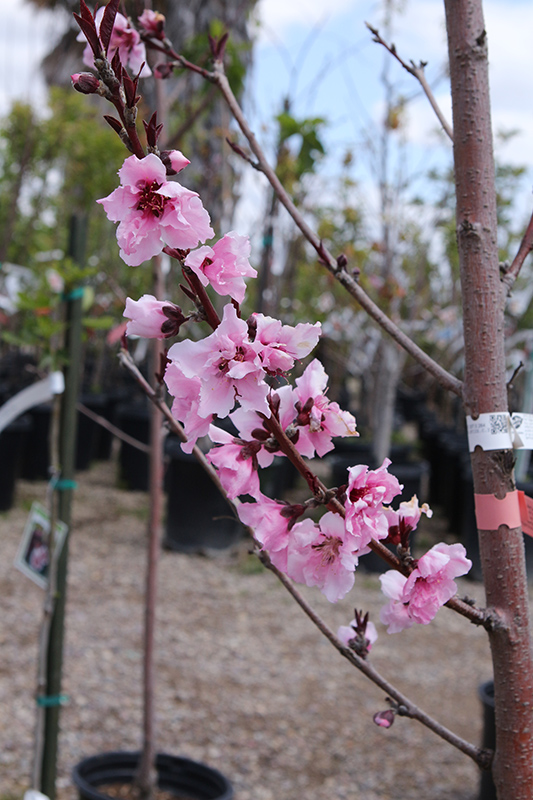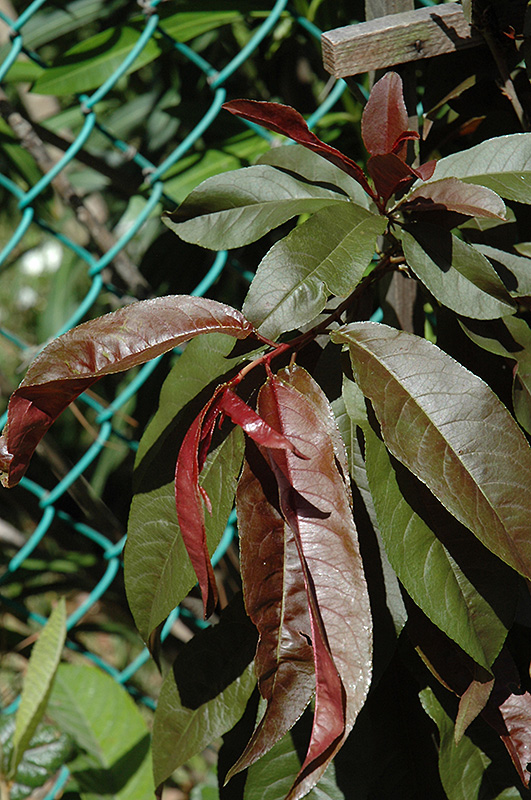Spicezee Nectaplum (Semi Dwarf) Prunus 'Spicezee' Height: 15 feet Spread: 15 feet
Sunlight:
Hardiness Zone: 5b Other Names: Necta-Plum, Nectarine x Plum Description: A true nectarine and plum cross that turns out to be a gorgeous tree, producing fruit that is unparalleled in flavor, with hints of both plum and nectarine; foliage emerges bright red and slowly changes to dark green, giving it great ornamental value Edible Qualities Spicezee Nectaplum (Semi Dwarf) is a small tree that is commonly grown for its edible qualities. It produces dark red round fruit (technically 'drupes') with shell pink overtones and creamy white flesh which are usually ready for picking in mid summer. Note that the fruits have hard inedible pits inside which must be removed before eating or processing. The fruits have a sweet taste with a soft texture and a spicy fragrance. The fruit are most often used in the following ways: Features & Attributes Spicezee Nectaplum (Semi Dwarf) is draped in stunning clusters of fragrant pink flowers along the branches in early spring before the leaves. It has dark green deciduous foliage which emerges red in spring. The narrow leaves turn yellow in fall. The fruits are showy dark red drupes with shell pink overtones, which are carried in abundance in mid summer. The fruit can be messy if allowed to drop on the lawn or walkways, and may require occasional clean-up. This is a deciduous tree with a more or less rounded form. Its average texture blends into the landscape, but can be balanced by one or two finer or coarser trees or shrubs for an effective composition. This plant will require occasional maintenance and upkeep, and is best pruned in late winter once the threat of extreme cold has passed. Gardeners should be aware of the following characteristic(s) that may warrant special consideration; Aside from its primary use as an edible, Spicezee Nectaplum (Semi Dwarf) is sutiable for the following landscape applications; Planting & Growing Spicezee Nectaplum (Semi Dwarf) will grow to be about 15 feet tall at maturity, with a spread of 15 feet. It has a low canopy with a typical clearance of 2 feet from the ground, and is suitable for planting under power lines. It grows at a medium rate, and under ideal conditions can be expected to live for 40 years or more. While it is considered to be somewhat self-pollinating, it tends to set heavier quantities of fruit with a different variety of the same species growing nearby. This tree is typically grown in a designated area of the yard because of its mature size and spread. It should only be grown in full sunlight. It does best in average to evenly moist conditions, but will not tolerate standing water. It is not particular as to soil type or pH. It is highly tolerant of urban pollution and will even thrive in inner city environments, and will benefit from being planted in a relatively sheltered location. This particular variety is an interspecific hybrid.![]()
![]()
![]()
![]()
![]()
![]()
![]()
![]()
![]()
![]()


